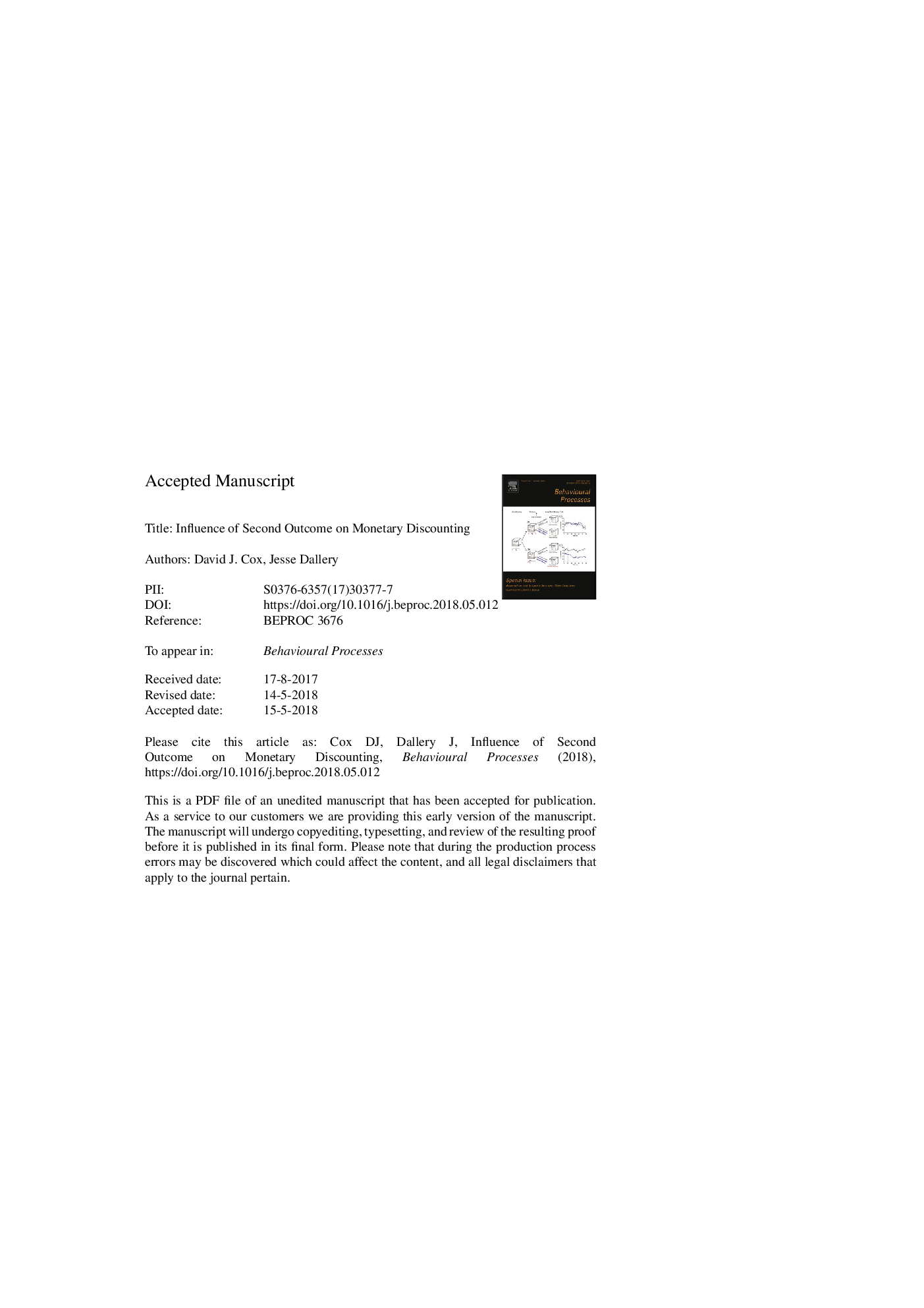| Article ID | Journal | Published Year | Pages | File Type |
|---|---|---|---|---|
| 8496933 | Behavioural Processes | 2018 | 25 Pages |
Abstract
The rates that an outcome (e.g., money) loses value as delay increases or probability decreases are called delay and probability discounting, respectively. Discounting is typically studied by asking participants to make choices between two options that vary in amount and delay (e.g., $50 now vs. $100 in 3 months) or probability (e.g., 100% chance of $50 vs. 60% chance of $100). Little is known about how more complex options affect discounting. We asked participants (Nâ¯=â¯56) to choose between two options that each resulted in two outcomes (e.g., getting $50 now and losing $1000 in 6 months vs. getting $100 in 3 months and losing $500 now). The second outcome varied across a range of delays and probabilities. Results indicated the probability of the second outcome had a greater influence on rates of discounting compared to the delay to the second outcome. Increasing the probability of the loss decreased rates of discounting the first outcome (i.e., increased preference for the larger-later alternative). Finally, a multiplicative model best described discounting of two, delayed-and-probabilistic outcomes. This suggests the value of two outcomes interact to influence rates of discounting.
Related Topics
Life Sciences
Agricultural and Biological Sciences
Animal Science and Zoology
Authors
David J. Cox, Jesse Dallery,
